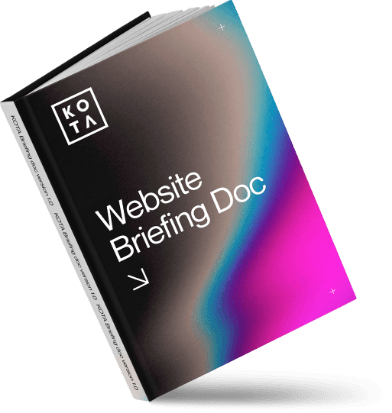Let’s talk about why SEO and UX go hand-in-hand

You might think SEO and UX are like chalk and cheese—one’s all about search engine algorithms, while the other focuses on creating enjoyable user experiences. But here’s the kicker: they’re actually deeply interconnected.
Stick with us, and we’ll show you why focusing on user experience (UX) is also enhancing your SEO efforts.
The Core Web Vitals connection
Google’s Core Web Vitals aren’t just a bunch of fancy tech terms—they’re about making your website faster, more interactive, and visually stable. And sites that excel in these areas get better rankings. Let’s break it down:
1. Largest Contentful Paint (LCP)
What it is: LCP measures the time it takes for the largest content element (like an image or a block of text) to load and become visible within the viewport.
Why it matters: Users are impatient. If they don’t see something happening on your site quickly, they’re likely to bounce. A slow site means users will leave, and Google notices that. High LCP times indicate poor performance and result in lower search rankings.
Tips for improvement:
- Optimise images: Use the right formats (like WebP), compress images, and ensure they’re not larger than necessary.
- Reduce server response times: Invest in a good hosting provider and optimise your backend performance.
- Use a Content Delivery Network (CDN): CDNs can drastically reduce load times by serving your site’s content from servers closest to your users.
2. First Input Delay (FID)
What it is: FID measures the time it takes for your site to become interactive, i.e., the time from when a user first interacts with your site (like clicking a button) to the time the browser is able to respond to that interaction.
Why it matters: Users expect a site to respond quickly to their interactions. Long delays can frustrate users, making them leave your site. A responsive site keeps users happy and engaged, reducing bounce rates and signalling good user experience to Google.
Tips for improvement:
- Minimise JavaScript: Too much JavaScript can block the main thread. Try to reduce or defer non-critical JavaScript.
- Break up long tasks: Ensure that long-running JavaScript tasks are broken up into smaller, asynchronous chunks.
- Use browser caching: Make sure that your site leverages browser caching to improve load times for returning visitors.
3. Cumulative Layout Shift (CLS)
What it is: CLS measures visual stability. It tracks how often users experience unexpected shifts in the layout as the page loads. For instance, if text or buttons move around while you’re trying to click them, that’s a high CLS score.
Why it matters: Users dislike unexpected shifts in content as it can lead to mis-clicks and a frustrating experience. Keeping things stable ensures a smoother experience, which Google rewards. A stable layout means users can interact with your site without annoying disruptions, leading to longer visits and better SEO.
Tips for improvement:
- Specify size attributes: Always include size attributes for images and video elements to avoid sudden shifts.
- Reserve space for ads: Make sure ad slots have reserved space and don’t push content around when they load.
- Avoid late content injections: Ensure no new content is inserted above existing content that would push it down unexpectedly.
Pro tip: Use Pagespeed Insights to see how your website scores for each of these vitals!
Why UX influences SEO
Now that we’ve covered the Core Web Vitals, let’s dive into some UX strategies that have a direct impact on your SEO:
1. Speed optimisation
Speed isn’t just a technical necessity—it’s a user experience mandate. Slow sites lose visitors, period. Here’s how to speed things up:
How to improve it:
- Compress images: Use tools like TinyPNG or ImageOptim to reduce image sizes without losing quality.
- Leverage browser caching: Ensure that returning visitors don’t have to reload the entire site from scratch.
- Use CDNs: CDNs store copies of your site across multiple locations worldwide, reducing the distance data needs to travel to reach users.
The impact: Faster load times mean happier users and higher rankings. Google’s algorithm prioritises speedy sites because they enhance the overall user experience.
2. Mobile-First Design
With more people browsing on mobile than ever before, your site must look and perform well on small screens.
How to improve it:
- Responsive design: Use flexible grids and layouts that adapt to different screen sizes.
- Touch-friendly navigation: Ensure buttons and links are easily tappable on touchscreens.
The impact: With most traffic coming from mobile, a mobile-friendly site is a must for good SEO. Google favours mobile-optimised sites in search results, particularly for mobile queries.
3. Intuitive navigation
Easy-to-use navigation isn’t just a UX win—it’s an SEO booster too.
How to improve it:
- Clear menus: Use straightforward language and logical structures for your menus.
- Accessible links: Make sure links are easy to find and not buried in submenus.
The impact: Easier navigation keeps users on your site longer, signalling to Google that your site is useful. Users are more likely to visit multiple pages if they can easily find what they’re looking for.
4. Content engagement
Content is king, but only if it’s engaging.
How to improve this:
- Multimedia: Incorporate videos, images, and infographics to make your content more dynamic.
- Clear headings: Use descriptive and concise headings to make content easier to skim.
- Concise paragraphs: Break up text into digestible chunks.
The impact: Engaging content means users stay longer, boosting your site’s relevance in Google’s eyes. Lower bounce rates and longer session durations are positive signals to search engines.
5. Visual Stability
Ensure your site doesn’t frustrate users with unexpected layout shifts.
How to improve it:
- Reserve space for ads: Define fixed sizes for ad slots to prevent content from being pushed around.
- Define size attributes in CSS: Specify width and height for images and videos.
Impact: A stable site is less frustrating, leading to longer visits and better SEO. Users are less likely to leave if they’re not battling with shifting content.
Some more advanced techniques
Ready to go above and beyond? Here are some advanced strategies:
1. Progressive Web Apps (PWAs)
- Offline access: Allow users to access your site even without an internet connection.
- Fast loading: PWAs are designed to load quickly and perform well.
- Push notifications: Engage users with timely updates.
SEO benefit: Enhanced user experience, better engagement, and improved metrics can lead to better search rankings.
2. Server-Side Rendering (SSR)
- Faster initial load times: Pages are rendered on the server before being sent to the user’s browser.
- Better indexing: Search engines can index SSR pages more efficiently.
SEO benefit: Better indexing and user experience can result in higher rankings.
3. AMP (Accelerated Mobile Pages)
- Fast-loading mobile pages: AMP provides stripped-down versions of your pages for lightning-fast load times.
SEO benefit: Higher rankings in mobile searches due to improved load speeds and user experience.
4. A/B testing and heatmaps
- A/B testing: Compare different versions of your pages to see which performs better.
- Heatmaps: Analyse where users click and how they navigate your site.
SEO benefit: Data-driven improvements lead to better engagement and rankings. By understanding user behaviour, you can refine your site to better meet their needs and expectations.
Summing up
By now, you should see that SEO and UX aren’t just related—they’re best mates. Google’s Core Web Vitals have made it clear: a good user experience isn’t just nice to have; it’s essential for top search rankings.
Focusing on UX means you’re already boosting your SEO. So, let’s make our sites not just easy to find but delightful to use. After all, a happy user is a returning user, and Google loves that.
Ready to elevate your UX and SEO game? Get in touch with us at KOTA, where we blend creativity with strategy to make your website shine. Let’s create something amazing together!
Interested in working with KOTA?
Drop us a line at
hello@kota.co.uk
We are a Creative Digital Agency based in Clerkenwell London, specialising in Creative Web Design, Web Development, Branding and Digital Marketing.






